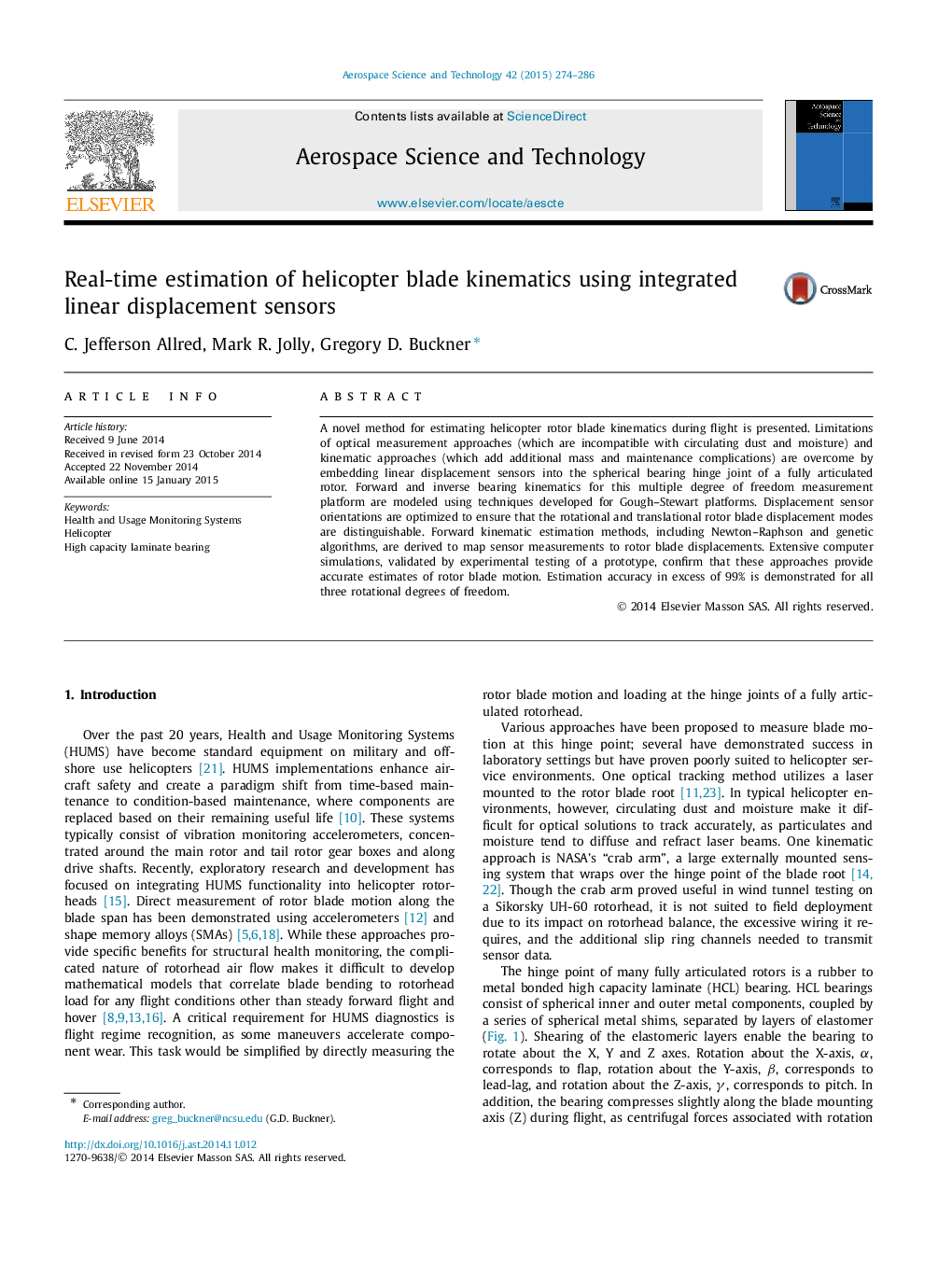| Article ID | Journal | Published Year | Pages | File Type |
|---|---|---|---|---|
| 1717927 | Aerospace Science and Technology | 2015 | 13 Pages |
A novel method for estimating helicopter rotor blade kinematics during flight is presented. Limitations of optical measurement approaches (which are incompatible with circulating dust and moisture) and kinematic approaches (which add additional mass and maintenance complications) are overcome by embedding linear displacement sensors into the spherical bearing hinge joint of a fully articulated rotor. Forward and inverse bearing kinematics for this multiple degree of freedom measurement platform are modeled using techniques developed for Gough–Stewart platforms. Displacement sensor orientations are optimized to ensure that the rotational and translational rotor blade displacement modes are distinguishable. Forward kinematic estimation methods, including Newton–Raphson and genetic algorithms, are derived to map sensor measurements to rotor blade displacements. Extensive computer simulations, validated by experimental testing of a prototype, confirm that these approaches provide accurate estimates of rotor blade motion. Estimation accuracy in excess of 99% is demonstrated for all three rotational degrees of freedom.
